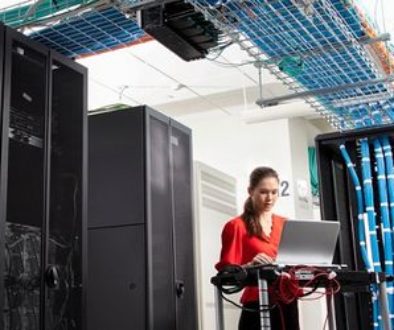6 ways to protect data in a dangerous world with HPE SimpliVity hyperconverged
It’s a dangerous world out there. Not just in foreign lands, but also much closer to home: your own data center. The data your business uses to service customers, innovate, and remain competitive is always under the risk of attack. Some attackers want to steal your data; others simply want to delete it in order to damage your business. Currently, an increasing number of attackers attempt to “lock” your data, and keep it inaccessible unless you play a ransom. This is the scourge of ransomware.
Most likely, you’ve heard about ransomware’s effects on an attacked organization, and hopefully you also know that, for the unprepared, the odds are against you. Many victims of cybercrime never regain access to their data, regardless of ransom payment. The fact is, the best way to protect your data is to have a solid data protection and recovery system in place.
To get a truly resilient system, you might have to do some homework. Many data protection products advertise the ability to mitigate the threat of ransomware. Because this system will be the main line of defense against losing your data, you need to look deeper than just the basic functionality. What differentiates HPE SimpliVity powered by Intel® from other hyperconverged systems is the robust data protection and the efficiency of data protection operations. In fact, there are six different ways your data protection could improve in the face of a cyberattack.
- Simplification of your environment
When preparing for any disaster recovery situation (such as a ransomware attack), it is hard to overstate how important it is to start by simplifying your environment. A simple environment has less moving parts that can fail, need to be recovered, and need to be diagnosed and tested. HPE SimpliVity is a hyperconverged infrastructure product, but the convergence of hypervisor, compute, and storage into a single data center device is only the beginning. By including advanced data services, HPE SimpliVity can provide the functionality of up to 10 different data center devices in a single product. This results in the reduction of devices that occupy data center space and interfaces that occupy administrative time. When it comes to disaster recovery, HPE SimpliVity infrastructure doesn’t require specialists to manage storage, maintain backups, or recover VMs when disaster strikes. - Instant recovery of a VM from a local backup
Every minute that data is unavailable is likely lost money or productivity for the business, so restoring availability is critical during a ransomware attack. With HPE SimpliVity, all data, as soon as it is created, is maintained in a deduplicated and compressed state. This deduplication occurs once and is maintained throughout the lifecycle of every VM and all backups. This means that duplicate data never needs to be created, processed, or stored. By avoiding duplicate data, many efficiencies can be realized, not the least of which is the ability to restore a VM backup in a few seconds. After a ransomware attack, this could add up to hours of saved time. - No data protection “house of cards”
Most data protection products are based on the concepts of tracking deltas through snapshots, incremental, or differential changes. These approaches suffer from the risk that if one point in time fails, there is a chance that subsequent points in time will no longer be valid. They also require maintenance to ensure backups are being created and tracked correctly, and possibly extra time spent reconstructing the specific point in time needed. For example, the point in time prior to the ransomware infection. When dealing with a cyberattack like ransomware, all of these issues form a risk to the integrity of the data and the amount of time it takes to recover the data. In contrast, every HPE SimpliVity backup is a complete, self-sufficient, and read-only version of the VM at that point in time — with no dependencies on the original VM or any other backup. All the blocks that backup utilizes are immutable and cannot be changed or removed as long as there is at least one VM or backup referencing them. - Universal protection of all VMs
One of the biggest challenges for data protection is ensuring that all data is properly protected. A missed backup or a new VM that isn’t properly configured with the backup system could result in a significant loss of data. By converging the hypervisor, storage, and data protection devices into a single management domain, HPE SimpliVity can easily protect all VMs by default. All automated backups are managed through policies that make it easy to create or change the data protection of many VMs across multiple data centers in just a few minutes. This ensures new VMs receive a default protection level and that every configured backup is created successfully. - Shorter recovery point objectives
Backing up data more frequently is usually a balancing act between having more granular restore points and the performance penalty incurred when backups run. Similar to the way that HPE SimpliVity can create restores in just seconds, creating local backups happens nearly instantly. Since no data is being duplicated, there are no unnecessary reads, writes, CPU processing, or network traffic, which results in essentially no performance impact during the creation of backups. The business result is that backups can occur more frequently on more VMs with no trade-offs for the performance of the VMs. In a restore operation, the more granular the restore point, the less data you lose. - Efficient protection across sites
In the most extreme case of ransomware attack, a full site failover may need to occur, which makes reliable and frequent backups between sites critical to any disaster recovery solution. HPE SimpliVity maintains data efficiency even when moving data between data centers by closely tracking metadata and only transferring unique data. When data does have to be migrated, it is moved in the original compressed state, without any need to reprocess it. The result are backups across the WAN that utilize less resources, complete quicker with less chance for error, and can occur more frequently.
All six of these items are features that HPE customers have come to rely on, and that they regularly cite when they report their satisfaction with their HPE SimpliVity hyperconverged infrastructure. These, combined with all the other advantages HPE SimpliVity brings, add up to a very robust solution that can protect customer data from the scourges of the Internet.
A new white paper is available that can help defend you against ransomware. It highlights real-world customers who have undergone cyberattacks, and includes steps you can take to minimize data loss and company downtime: Mitigating Ransomware Risks with HPE SimpliVity Hyperconverged Infrastructure.



![picture2-1555105142615[1] picture2-1555105142615[1]](https://builddaylive.com/wp-content/uploads/2019/05/picture2-15551051426151-1024x255-394x330.png)